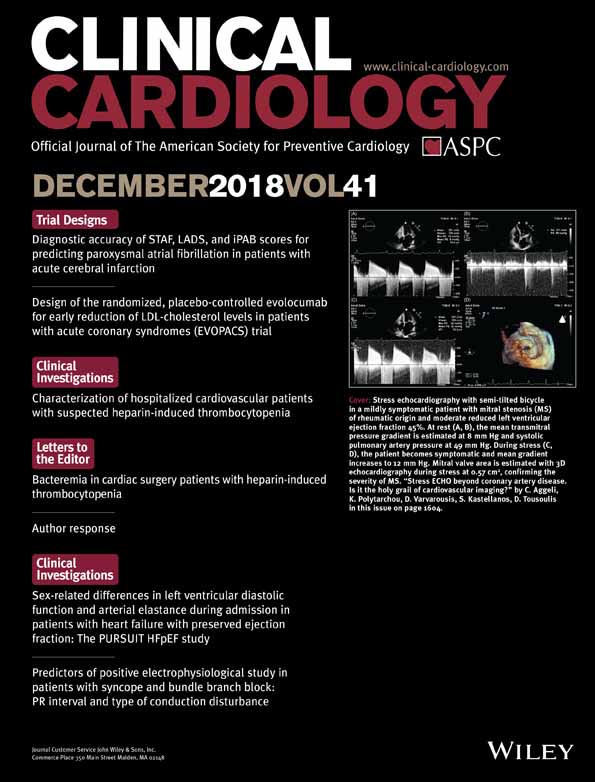Association between ideal cardiovascular health and markers of subclinical cardiovascular disease
Abstract
Background
Ideal cardiovascular health (CVH) was proposed by the American Heart Association to promote population health. We aimed to characterize the association between ideal CVH and markers of subclinical cardiovascular disease (CVD).
Hypothesis
We hypothesized that ideal CVH is associated with several markers of subclinical CVD.
Methods
We used data from the Heart Strategies Concentrating on Risk Evaluation (Heart SCORE) study. We assigned 1 for each of the ideal CVH factors met. Endothelial function, expressed as Framingham reactive hyperemia index (fRHI), was measured using the EndoPAT device. Coronary artery calcium (CAC) and carotid intima-media thickness (CIMT) were quantified using electron beam computed tomography and carotid ultrasonography, respectively.
Results
A total of 1933 participants (mean [SD] age: 59 [7.5] years, 34% male, 44% black) were included. The mean number of ideal CVH factors met was 2.3 ± 1.3, with blacks having significantly lower score compared to whites (2.0 ± 1.2 vs 2.5 ± 1.4, respectively; P < 0.001). Seven hundred and eighty-nine participants (41%) achieved ≥3 ideal CVH factors. Participants with ≥3 ideal CVH factors (compared to those with <3 factors) had an average of 107 (95% confidence interval [CI]: 50-165) Agatston units lower CAC, 0.04 (0.01-0.06) mm lower CIMT, and 0.07 (0.02-0.12) units higher fRHI, after adjusting for age, sex, race, income, education, and marital status. Participants with ≥3 ideal CVH factors had 50% lower odds (95% CI: 28%-66%) of having CAC >100 Agatston units.
Conclusion
In a community-based study with low prevalence of ideal CVH, even achieving three or more ideal CVH factors were associated with lower burden of subclinical CVD, indicating the utility of this construct for disease prevention.
CONFLICTS OF INTEREST
The authors have no conflicts of interest to report.




